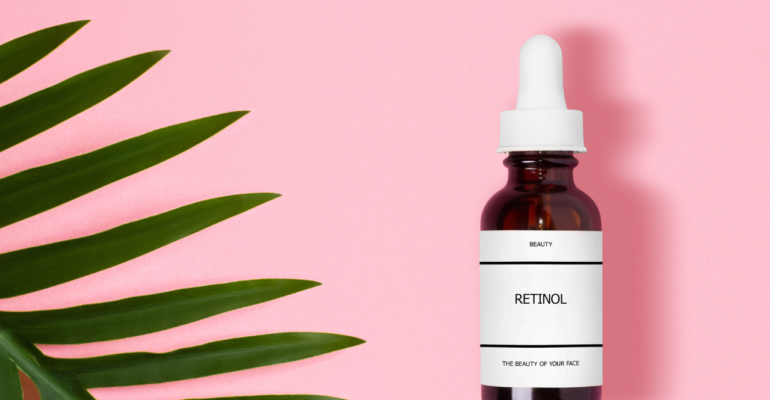Retinoids: A Complete Dermatologist’s Guide
April 21, 2025 2025-04-21 8:50Retinoids: A Complete Dermatologist’s Guide
As an Amazon associate, Dermatocare earns from valid purchase made by clicking on the affiliate links in this blog.

Retinoids: A Complete Dermatologist’s Guide
Retinoids are among the most scientifically proven and dermatologist-recommended ingredients in skincare. They offer powerful benefits in acne treatment, anti-ageing, and skin texture improvement. However, their proper use is essential to prevent irritation and ensure optimal results.
This guide offers a complete overview of retinoids—what they are, their benefits, types, suitability for different skin types, how to use them correctly, possible side effects, and who should avoid them.
What Are Retinoids?
Retinoids are vitamin A derivatives that work by accelerating skin cell turnover, boosting collagen production, and regulating oil production. They penetrate the skin and bind to retinoic acid receptors (RARs), modulating gene expression that controls cell proliferation and differentiation.
They are available both over-the-counter (OTC) and in prescription strengths, and are used in dermatology for acne, photoaging, pigmentation, psoriasis, and even precancerous skin conditions.
What Are the Benefits of Retinoids?
Retinoids offer a broad spectrum of skin benefits backed by clinical research:
- Acne Treatment: Retinoids are first-line treatments for both comedonal and inflammatory acne. They unclog pores and reduce inflammation.
- Anti-Ageing: They stimulate collagen and elastin synthesis, reducing fine lines, wrinkles, and sagging.
- Improved Skin Tone and Texture: Retinoids promote even skin tone, fade pigmentation, and smoothen rough patches.
- Oil Regulation: By normalizing sebaceous gland activity, retinoids help control oily skin and reduce breakouts.
- Prevention of Pre-cancerous Lesions: Prescription-strength retinoids like tretinoin are used to treat actinic keratoses and reduce the risk of skin cancers in high-risk patients.
What Are the Different Types of Retinoids?
Retinoids are categorized based on their strength, mode of action, and whether they are available OTC or by prescription:
| Type | Used For | Strength | Chances of Reaction | OTC/Prescription |
|---|
| Retinoic Acid | Acne, anti-ageing, pigmentation | Strong | High – often causes dryness, redness | Prescription |
| Retinaldehyde | Early signs of ageing, sensitive acne | Medium | Moderate – better tolerated than retinoic acid | OTC |
| Retinol | Mild ageing signs, preventive anti-ageing | Mild | Low to moderate depending on concentration | OTC |
| Retinyl Esters | Extremely sensitive skin, beginners | Very mild | Very low – minimal irritation | OTC |
| Adapalene | Acne (comedonal and inflammatory) | Moderate | Low – stable and well tolerated | OTC / Prescription |
| Tazarotene | Acne, psoriasis, pigmentation | Very strong | High – may cause peeling and irritation | Prescription |
| Trifarotene | Truncal and facial acne | Moderate | Low to moderate – RAR-γ specific, targeted | Prescription |
Which Retinoid Is Best for Sensitive vs. Non-Sensitive Skin?
| Skin Type | Recommended Retinoid | Why |
|---|---|---|
| Sensitive Skin | Retinyl palmitate, Low-strength Retinol (0.25%) | Gentle, less irritating |
| Dry or Mature Skin | Encapsulated Retinol, Retinaldehyde | Anti-ageing benefits with lower risk of dryness |
| Oily/Acne-Prone Skin | Adapalene, Tretinoin | Oil regulation, unclogs pores |
| Resilient/Non-Sensitive Skin | Tretinoin, Tazarotene | Tolerates strong actives and faster results |
How to Use Retinoids Correctly
To maximize benefits and minimize irritation, follow this stepwise protocol:
1. Start Low and Slow
- Begin with a low concentration (e.g., 0.25% retinol or adapalene 0.03%) 2–3 times a week.
- Gradually increase frequency to every other night or daily over 2-3 weeks.
2. Night-Time Application Only
- Retinoids degrade in sunlight and may increase photosensitivity.
- Apply a pea-sized amount on clean, dry skin at night, avoiding eyelids and lips.
3. Sandwich Method (for sensitive skin)
- Apply a thin layer of moisturizer, then retinoid, followed by another layer of moisturizer to buffer irritation.
4. Use Sunscreen Daily
- Retinoids increase sun sensitivity; SPF 30 or higher is non-negotiable.
5. Avoid Mixing With Irritants
- Avoid using AHAs, BHAs, benzoyl peroxide, and vitamin C at the same time. Introduce them in separate routines if needed.
What Are the Side Effects of Retinoids?
Initial irritation, known as “retinization,” is common and usually temporary.
Common side effects:
- Redness
- Peeling and dryness
- Stinging or burning
- Purging (temporary breakout)
Rare side effects:
- Eczema flare-ups
- Post-inflammatory hyperpigmentation in darker skin tones
- Photosensitivity
Management Tips:
- Buffer with moisturizers
- Reduce frequency
- Switch to a milder formulation
Who Should Avoid Retinoids?
Retinoids are not suitable for everyone. Avoid or use with caution in the following scenarios:
- Pregnant or Breastfeeding Women: All retinoids, including topical ones, should be avoided due to teratogenic risks.
- Active Eczema or Rosacea: May worsen flares.
- Post-procedure Skin (Laser, Peels): Wait until skin heals completely.
- Severe Sunburned Skin: Postpone use until recovery.
Always consult a dermatologist before starting retinoids if you have chronic skin conditions or are using other active medications.
Conclusion
Retinoids are a gold standard in dermatology for their multi-targeted effects on acne, ageing, pigmentation, and skin texture. While highly effective, their use must be customized based on individual skin type, tolerance, and skin goals.
For sensitive skin, start with gentle forms like retinyl palmitate or retinaldehyde. For acne-prone or resilient skin, prescription options like tretinoin or adapalene may be more effective. Always introduce retinoids gradually, use sun protection, and consult a dermatologist for personalized guidance.
ROUTINE FINDER
Get free dermatologist-recommended regime by choosing your skin or concerns.

FACE

HAIRS

CHILD

BODY




